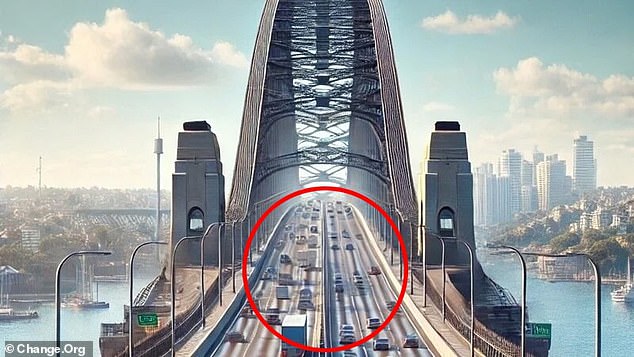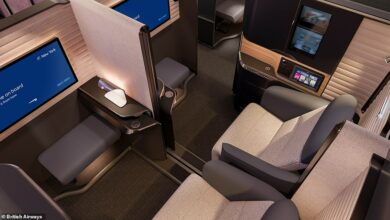Insane plan proposed for Sydney Harbor Bridge – is it a good idea?

Australians are calling for a revolutionary safety system to be installed on the Sydney Harbor Bridge after two men were killed in a head-on collision last month.
The October 17 crash, which injured six others, including a pregnant woman, inspired Sydney woman Madison Golledge to start a petition calling for the installation of a movable barrier between the northbound and southbound lanes.
The Sydney Harbor Bridge uses a reversible lane system that changes the flow of northbound and southbound traffic throughout the day.
The infamous lane four, also known as the ‘suicide lane’, is usually reversed after rush hour traffic with a green check mark or red cross indicating which lanes can be used.
“Every day, thousands of Sydney commuters like me roll the dice across the Sydney Harbor Bridge,” Ms Golledge wrote on the petition change.org.
“What should be an easy commute is made dangerous by the bridge’s lanes, separated by nothing more than a painted line between fast, oncoming traffic. This lack of a physical barrier has tragically claimed lives and led to frequent head-on collisions, giving the lane an unfortunate reputation.”
Ms Golledge believes that installing a movable ‘zipper’ would provide a practical solution to balance traffic flow and safety.
Road zippers have eliminated head-on collisions since they were installed on San Francisco’s Golden Gate Bridge in 2015 and on the Auckland Harbor Bridge in 1990.

Pictured is a rendering of what a movable ‘road zipper’ system would look like on the Sydney Harbor Bridge. The petitioners say yes

The road zipper system has been successful in eliminating head-on collisions on San Francisco’s Golden Gate Bridge (pictured) and New Zealand’s Auckland Harbor Bridge
The zipper system was used on Sydney’s Victoria Road over a decade ago.
Movable road zippers are designed to prevent head-on collisions and provide flexibility and safety on roads, bridges and construction zones.
The flexible barrier wall consists of sections of one meter high reinforced concrete that are tied together to form a continuous barrier wall.
A specialized vehicle lifts the concrete barriers and moves them via a conveyor system.
The system enables dynamic lane allocation and can be adjusted to traffic patterns throughout the day.
Jamal Choukri, 44, was driving to work when he was killed in the Oct. 17 multi-vehicle crash.
A 51-year-old male driver of a Hyundai i30, traveling in the northbound lanes, crossed into traffic in the southbound lanes before colliding with a Mercedes.
The vehicle then struck Mr Choukri’s Hyundai Accent, killing both men in the collision.
Ms Golledge said it was time the Sydney Harbor Bridge met the same safety standards as every other major highway in the city.

Red crosses and green check marks (circled in red) indicate which lanes are available for motorists traveling north and south on the Sydney Harbor Bridge

Truck driver Jamal Choukri, 44, was driving to work when he was killed in the Oct. 17 multi-vehicle crash. An unidentified 51-year-old man also died
“As citizens, we expect our government to build an infrastructure that prioritizes safety and minimizes risk, even from the mistakes of others,” she said.
She added that the complex issue requires “a careful balance between safety and traffic demands on one of Sydney’s busiest routes.”
Ms Golledge said she hoped the petition, which has received 1,297 signatures so far, would inspire Jo Haylen, the NSW Minister for Roads and Transport, to explore possible solutions.
A spokesperson for Transport for NSW told Daily Mail Australia the government had considered installing a barrier system in recent years.
“Every death on NSW roads is a tragedy and the NSW Government is committed to reducing the number of deaths on our roads,” they said.
‘Previous research into movable barrier systems has shown that they are not suitable for the Sydney Harbor Bridge, due to limitations such as the width of the barrier systems and the structural capacity of the bridge deck.
“Transport for NSW is continually assessing how we can deliver further safety improvements to the road network.
“In 2022, we will have installed clearer signage for motorists on the Sydney Harbor Bridge following a speed zone and signage review.”

Two men were killed in the tragic head-on collision on the Sydney Harbor Bridge on October 17




